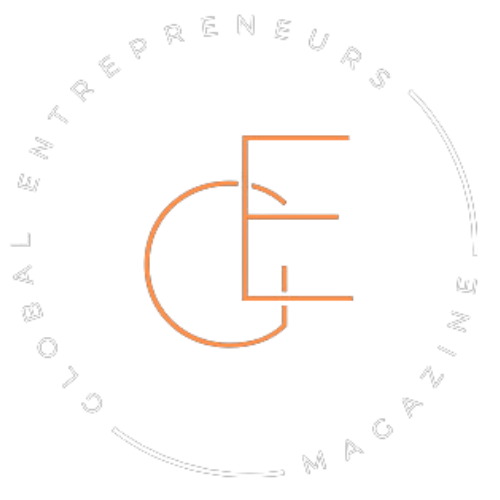The room barely fit a twin bed, a desk, and a stack of Amazon boxes doubling as shelves. Somewhere between exam cramming and midnight ramen runs, an idea kept tapping at the back of his mind—louder than the parties next door, more persistent than his econ professor’s reminders about midterms.
He wasn’t chasing a title. He wasn’t even sure it would work. What he knew was this: something was broken out there, and he couldn’t stop thinking about how to fix it. Not someday. Right now.
While his classmates were perfecting resumes and prepping for internships, he was sketching mockups on notebook margins, testing prototypes on campus Wi-Fi, and pitching an idea that felt ridiculous—until it didn’t.
No investors. No team. No “connections.” Just a twenty-something who believed the walls of a dorm room weren’t big enough to contain what he was building.
And that’s how it started.
The first product and the first ‘no’
It looked rough.
The kind of rough that made him wince when he opened the box. The logo was off-center. The packaging felt like a rushed school project. And the actual product? Let’s just say it wasn’t winning any design awards.
But it was real. Tangible. A thing he could hold in his hands.
He shipped it to ten people—friends, acquaintances, a professor who once said, “I’ll support any student who actually builds something.” Nine of them responded with some version of, “It’s cool, but I don’t think this is going to work.”
One didn’t reply at all.
It stung more than he expected. He wasn’t naive; he knew most first tries failed. Still, hearing “no” felt heavier when the stakes were this personal.
But there was one message that kept him going. It came from a classmate he barely knew, someone who had ordered out of curiosity. The email was short: “Hey, I think you’re onto something. Do you have more?”
That was all he needed.
He didn’t print it out and tape it to the wall, but it lived rent-free in his head every time doubt crept in. It wasn’t validation. It was momentum. And when you’re building from scratch, sometimes that’s all you can afford.
Turning dorm hustle into a business
His laptop doubled as a storefront. His closet? Inventory. Most nights blurred into early mornings with half-finished assignments on one tab and customer orders on another.
There was no blueprint. No marketing team. Just one person obsessing over every detail—from the font on the website to the tape used on packages. He taught himself to write copy, fix bugs, and run ads—all between classes he wasn’t even sure he needed anymore.
The first few orders came from friends. Then friends of friends. Then strangers who had no idea this “brand” was being run out of a college dorm that smelled like instant noodles.
Every new order felt like a small miracle.
He packed each one by hand, scribbled thank-you notes, and walked them to the campus mail center like they were glass.
There were no shortcuts. No hacks. Just hustle.
And little by little, it started working.
Going global without losing their voice
The first international order came from Singapore.
He refreshed the screen three times just to make sure it wasn’t a glitch. Then he sat there for a second, just staring at it—someone halfway across the world had not only found his tiny dorm-born brand but paid money for it. That feeling never got old.
As word spread, the orders started stacking up—then spilling over. What used to be late-night packing marathons turned into spreadsheets, supplier calls, and real shipping logistics. He wasn’t just selling to classmates anymore. He was shipping to cities he couldn’t pronounce.
But growth didn’t come without bruises.
There was the time customs held an entire shipment for weeks because of a labeling error. Another time a manufacturer switched materials without telling him, and hundreds of customers got the wrong product. Every mistake felt like a step backward—and there were days when he wondered if the whole thing was slipping away.
Still, he kept showing up.
What mattered more than volume or headlines was that the brand stayed human. He refused to sound like a corporation. Every product, every campaign, every customer message had to feel like it came from a real person—because it did.
Even as the team grew and warehouses replaced dorm closets, the mission stayed the same:
Make something real. Speak like a person. Remember where you started.
Lessons from the climb

He doesn’t pretend it was all grit and genius.
There were nights he couldn’t sleep—not because of excitement, but anxiety. Launch days that fell flat. Moments he seriously considered quitting. And the quiet kind of burnout that sneaks in when success demands more than you expected to give.
He missed birthdays. Skipped vacations. Lost friends who didn’t understand why he was always “on.”
What most people saw was the highlight reel—press mentions, sold-out drops, glowing reviews. What they didn’t see was the self-doubt behind every decision and the pressure of being the one everyone looked to for answers, even when he had none.
But through all of it, one thing stayed constant:
He cared. Too much, sometimes.
He cared about the product. The people buying it. The name on the box. And that care, even when it hurt, became his compass.
If you asked him what mattered most through the chaos, he wouldn’t talk about profits or milestones.
He’d probably just say: “We never faked it. We built it honestly. That’s why we’re still here.”
What’s next—and why that matters
He’s no longer shipping orders between classes or pulling all-nighters with finals on the horizon. The dorm is long gone. So is the part where people ask if this is “just a side project.”
But the hunger hasn’t faded.
Now, the mission is bigger than just product drops or international expansion. It’s about building a brand that actually means something—to people who feel unseen, unheard, or underestimated. The same way he once felt sitting alone in that cramped room with an idea that no one took seriously.
He’s not chasing trends. He’s building legacy.
The plan isn’t fully mapped out—and he likes it that way. There’s freedom in figuring it out while moving forward. New ideas are already brewing, and if history’s any clue, they won’t stay on paper for long.
For anyone staring at a blank notebook or tinkering with an idea after hours, he’d probably tell you this:
Start ugly. Stay honest. And don’t wait for perfect—just start.
Because global brands don’t begin in boardrooms.
Sometimes, they start in dorm rooms. With ramen, doubt, and a stubborn kind of belief.



